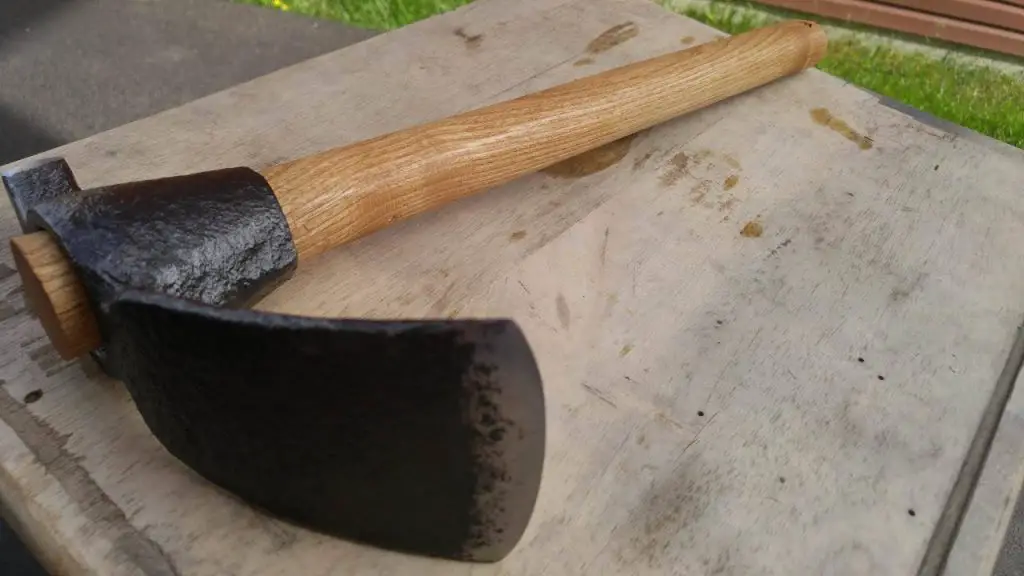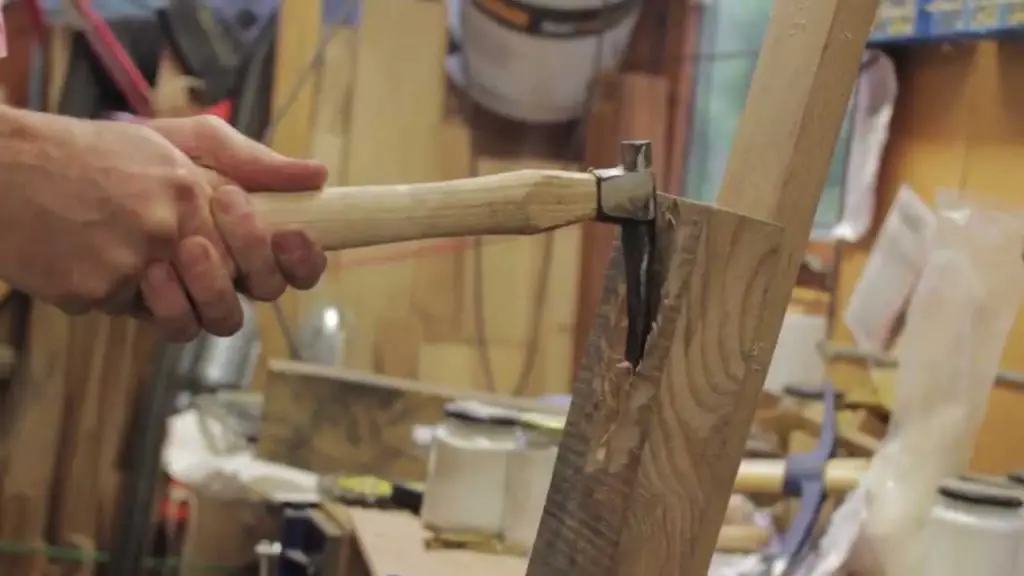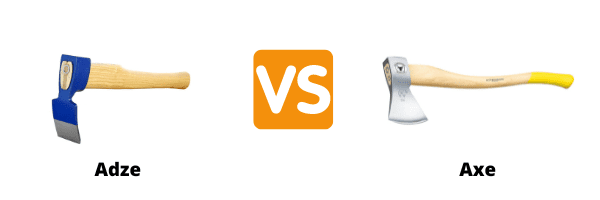An adze is a versatile woodworking tool with a long handle and a sharp, curved, chisel-like blade perpendicular to the handle. Primarily used for shaping, hollowing, or smoothing wood surfaces, adzes have been employed since ancient times in carpentry, boat building, and sculpting, with various sizes and shapes available for specific tasks.
The history of the adze dates back to the ancient Egyptians. They would use it to shape large timbers for construction purposes. The word ‘adze’ comes from the Middle English word ‘adz,’ which means ‘to hew’ or ‘to cut’ in Old English.
Table of Contents
What is an Adze?
An adze is a cutting tool shaped like an axe head rotated 90 degrees. It has a long handle, and the head of the tool is shaped like an asymmetric triangle. The adze was used in ancient times to shape wood and other materials.
An adze is a tool used in woodworking and carpentry. It can be used for shaping, smoothing, or carving. The adze blade is shaped like a triangle and usually has a long handle. They were initially made from stone but are mostly made from metal.

History
The first adze was found in the earliest human civilizations and remains a tool for shaping wood and other materials.
The adze was first invented in Africa, where it became popular for shaping wood and other materials. The earliest evidence of using the hafted adze dates back to Neolithic times, around 4000 BC. Ancient Egyptians also used it to shape stone blocks for construction.
The adze is one of the oldest tools known to human civilization. It’s been found in excavations from the earliest human civilizations, including Ancient Egypt, Mesopotamia, and Ancient Rome. The adze is also used today by woodworkers, carpenters, sculptors, and others who need to shape materials like stone or wood.
Different Types of Adze
There are two main types of adze: the hafted and the unhafted.
Hafted Adze
The hafted adze is a tool designed to be used with both hands. It has a blade on one end and a handle on the other. It is usually used for heavier tasks such as cutting logs, felling trees, shaping planks, and slicing mortises in posts or beams.
Unhafted Adze
The unhafted adze is designed for one-handed use and can be shaped like an axe or a chisel. It is used for lighter tasks such as carving, shaping, or smoothing wood surfaces. Unhafted adze were disposed of after a single-use.
Foot Adze
A foot-adze has a blade at the end of the handle, so you can use it while standing up. It’s perfect for shaping large pieces of wood or carving out huge chunks of material from logs. The main difference here is the length of the handle, which allows shipbuilders to swing the adze between their legs. Foot adze’s are better suited for larger logs or boards for trimming, leveling and shaping.
Other Types of Adze
Many other modern tools with a horizontal adze blade include ice axes, railroad adze, Halligan bars, demolition adze, and many others.
Function

The adze is a type of axe typically used in carpentry. It is a tool for shaping wood and other materials.
The adze consists of an axe blade with the blade set at 90 degrees to the handle. The blade edge curves in both directions from the handle – towards the tip and from the tip back towards the handle. The curvature of this edge provides additional cutting power through increased leveraged force on either side of the blade’s edge, allowing for quicker work when shaping wood.
The adze shapes wood by chopping out deep notches or shaping surfaces. The blade typically has a curved cutting edge on one side to be swung with a level action on both sides of the timber.
The adze is shaped like an axe but has a sharp edge on only one side. The other side of the blade curves upwards and then down at the end. This makes it easier to use the adze on logs lying horizontally on the ground.
Adze vs Axe

An adze is a tool used in woodworking shaped like an axe with a horizontal blade that curves away from the handle. It is used to shape beams and posts. It is used to shape wood and stone. The blade’s edge is set at right angles to the handle, which allows it to be driven by a single hand.
An axe has a vertical blade shaped like a wedge, and it is used to cut down trees or chop firewood. An axe has a long handle with a heavy blade at one end, typically pointed or curved on one side. It has many uses in carpentry, such as cutting and splitting wood or chopping firewood or ice blocks for wintertime cooking.
Adze vs. Mattock
An adze and a mattock are very similar tools in their design but have very different functions. They possess a horizontal blade, but a mattock is a significantly heavier and longer-handled tool. Mattock’s are primarily used for digging trenches through heavy soil, while the adze is lighter with a sharp blade used in woodworking.
A mattock is a hand tool with a heavy metal head with a sharp pick on one side and an adze on the other. It can be used as both a pickaxe and an adze.
Conclusion
The article concludes by stating that the adze is a powerful tool used for thousands of years. In modern times they are popular among woodworking for carving. Their horizontal blades make them better suited for hewing logs than an axe.
